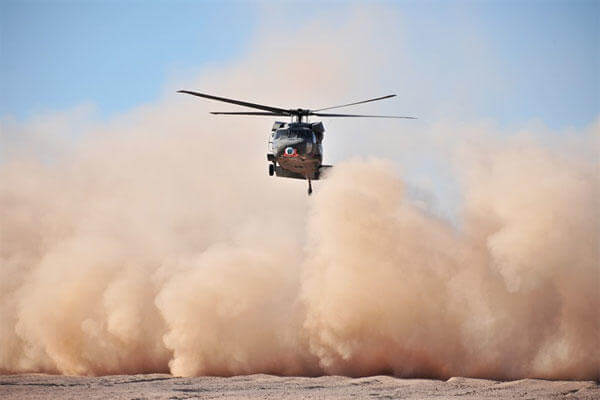NASHVILLE -- Army leaders defended their plan Monday to overhaul the Army's aviation structure in hopes of saving $12 billion to invest in both near terms helicopter upgrades and the Army's hope to build the next generation fleet by 2030.
The Army's top aviation officer, Maj. Gen. Michael D. Lundy, described the next 25 years as a period of "vulnerability" for the Army's aviation fleet. He along with other Army aviation leaders said the service has a list of areas where the Army has "gaps of capability" in its aviation fleet.
Tops on that list is engine power and giving pilots the ability to see through dust and bad weather, Lundy said Monday at the Army Aviation Association of America's annual conference here.
The Army's is still determining just how fast and how far it wants its next fleet of helicopters to fly under the Future Vertical Lift (FVL) program. But it also has near term upgrades it wants to accomplish before 2030 when the Army hopes to field its first FVL aircraft.
Heidi Shyu, the Army's top weapons buyer, told the crowd of Army aviators and industry executives that her top priority for Army was the program to replace the engines of the AH-64 Apaches and UH-60 Black Hawks by 2023.
Under the Improved Turbine Engine Program, the Army hopes to boost the power and range of the two Army aviation workhorses. Army officials expect the program to produce a 3,000 horsepower engine that would increase power by 50 percent and fuel efficiency by 25 percent.
Related Video
The Army aviation branch also emphasized improving its pilots' ability to see through dust and fog. Lundy called it a "game changing" ability that can't wait until the 2030s for the Army to introduce.
Earlier this month, an Army Black Hawk with the Louisiana Army National Guard crashed off the coast of Florida on a night with limited visibility due to fog. The cause of the crash has not been determined as the Army continues its investigation, but visibility is believed to have played a part.
Seven Marines from Marine Special Operations Command and four Black Hawk crew members with the 1-244th Assault Helicopter Battalion died in the crash.
Army pilots flying in Iraq and Afghanistan have commonly faced what are called brownouts, which occur when the rotor wash creates a cloud of dust and dirt that engulfs the helicopter and severely limits visibility. Brownouts caused a number of accidents and hard landings over the past decade.
Shyu and Lundy said the Army and the rest of the Defense Department is researching various sensors, radars and computer programs designed to offer pilots a clearer picture of the environment.
The technology exists but finding the money to pay for these programs may serve as a bigger challenge in developing these systems, Shyu said. The across the board sequestration cuts would set back the Army's aviation modernization budget significantly and delay any improvements to the current fleet, she said.
Those cuts could put in jeopardy the Army's plan to build the helicopter fleet of the future. Discussions on the development of the FVL aircraft again dominated the panel sessions here at the conference.
Leaders used the budget pressures to partially explain the decision making for the controversial Aviation Restructuring Initiative that includes the retirement of the OH-58 Kiowa and the transfer of Apaches from the Guard to active duty.
While Guard officials have pushed back against the decision during the past year, criticism of the strategy was not as loud during the first day of the conference. Leadership across the force acknowledged that the service has had to make decisions to keep modernization programs funded.
-- Michael Hoffman can be reached at Mike.Hoffman@military.com.





























